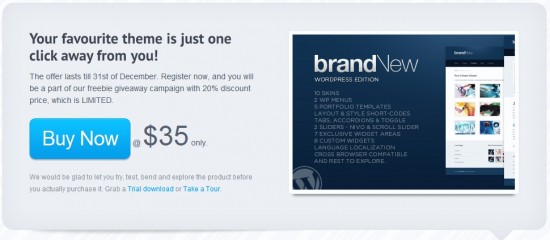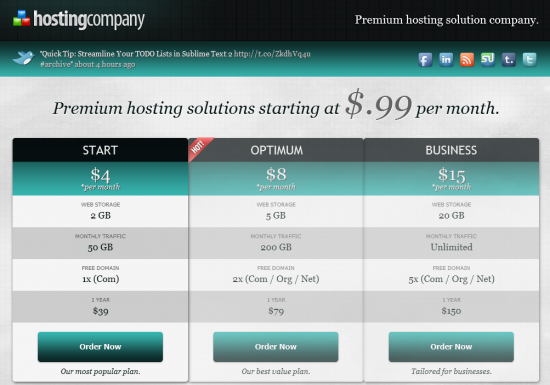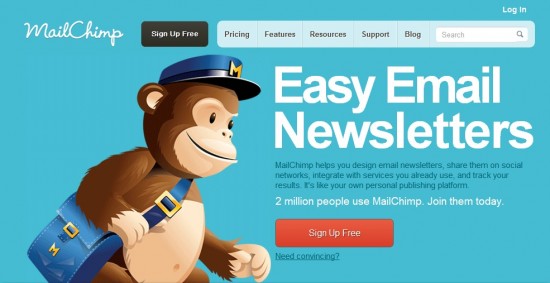Everyone knows I’m a big fan of OpenSim. I want it to grow big, with lots of different things to do, lots of different places to go, lots of people to meet.
This requires that it get easier for people to set up their own grids and regions. For the budget-conscious, I recommend New World Studio as the simplest possible way to set up an at-home mini-grid for free. Â Quick note to the New World Studo folks — put a big button right in the middle of your home page that says “Free Download.” I know it’s in your menu up top, but the less looking around folks have to do, the easier, and the “Downloads” button doesn’t really stand out up there — it’s easy to miss it.
But a lot of people don’t want to run their own OpenSim server any more than they would run their own webserver. Maybe they don’t want to deal with installing and updating the software, or having to keep the computer on all the time, or configuring their routers for outside access. Maybe they don’t have the bandwidth, processor speed or memory to support the kind of builds they want to have and the visitors they hope to get. Maybe they just don’t want the hassle — we have enough hassles in our lives as it is.
And with OpenSim region hosting prices starting at just $5 a month, there is really no financial obstacle to renting. Even at the highest end, for the top commercial grids, OpenSim prices top out at under $90 for specialized role playing grids. Â General-purpose commercial social grids tend to be priced at between $50 and $75 a month.
It’s no wonder that OpenSim grids are growing like gangbusters — we’re currently tracking more than 200 active grids, with more than 22,000 reported regions on those grids and and more than 260,000 registered users — and only about three-quarters of the grids reported their region and user counts.
That’s a nice start, but OpenSim needs to step up its sales and marketing efforts, especially with Linden Lab now taking steps to reduce OpenSim access from its approved viewers.
Here are some suggestions.
Yes, they’re obvious, but, remarkably, few OpenSim grids and hosting companies actually do any of these.
Fewest clicks
Ideally, you want your customer to buy with just one click.
This means that they have all the information they need to make the purchase — but nothing extraneous to distract them — right on the landing page. That landing page could be the home page, or could be a special page set up for in-bound clicks from advertisements, Tweets, Facebook mentions, or hosting directories like ours.
By fewest clicks, I mean the number of mouse clicks — and key strokes — between the time the visitor lands on your page and when they give you their money.
Once they give you the money, they’re committed.
That’s when you ask them to pick their region name and coordinates, to ask them if they have a user account yet or not and, if so, to create one.

Many technologists are orderly folks, who first want you to create your account, then log in, then buy some virtual currency, then choose region coordinates and server specifications… that’s all nice and fine in a theoretical world where, once people make a buying decision, they stick with it no matter what. In practice, however, every additional keystroke is an opportunity for your customer to get bored, to change their mind, to get called away by the telephone, or to decide to shop around some more. Plus, it’s annoying to type stuff in. After a certain point, the customer is going to be too annoyed to do business with your company.
Take the money first. Then fill in the details.
You won’t believe how hard some grids make it to give them money.
Fewest choices
Making a choice is hard work. Do I want the 15,000-prim region or the 25,000-prim region? The 10 avatar capacity or the 20 avatar capacity? Hypergrid or no hypergrid? Dedicated or shared server? Megaregions or no megaregions? Anytime a customer says, “I don’t kinow” there’s a chance you’ve lost the sale right there.

The single choice option is a good fit for a landing page that offers a special, limited time deal, or for grids with only one pricing plan.
But even a grid or hosting company with a million options can use a one-choice page, by simply picking the single most popular option and putting all the rest under an “advanced” or “more hosting choices” tab.
Your customers will thank you.
Another common option is the three-choices landing page.

Here, your customers can choose from “basic,” “standard” and “premium” packages. This is a good option where your customers are a little bit more knowledgeable than average.
Folks tend to pick the one in the middle, so feel free to make it stand out a little more by using a bolder color or a “most popular” flag.
This is also a good choice if your prices are on the high side — the even-higher-priced premium option will make your standard package look like a bargain in comparison.
But pricing isn’t the only area where many grid and hosting customers are confused by too many options.
Another area in which to limit choices is that of viewer download. Pick a viewer, and let your users pick the Windows, Mac or Linux versions of it and have those links initiate the download. Don’t make your customers try to navigate github repositories. If your grid supports mesh, I recommend the latest Firestorm viewer. If you can, get it customized so that it logs people in to your grid directly.
Or you can offer a plugin, similar to what Kitely and SpotON3D have in place, to make it even easier to access your world.
Finally, another option that some grids are experimenting with is to offer Facebook logins, which can greatly simplify the avatar creation process. Just make sure that users have alternatives as well, if they want to use another name for their avatar.
Free offer
A free offer — especially one that requires the fewest clicks and no choices — is a great way to get people into your grid.
That free offer can be a free lifetime homestead parcel, for example, a free store rental, or a free trial month of hosting.

Just make sure that your free offer is worth something. Every grid offers free memberships — that won’t exactly make your grid stand out. Neither will a free avatar, unless you’ve got something super special, custom designed for your grid.
There are some other kinds of free content that can draw people in, however. If you have a racing grid, you can give away a free basic race car. If your grid is all about S&M, you can give away a free bondage starter kit. If your grid is about piracy on the high seas, you can give away a free pirate ship.
The perceived value of the content will be increased if its unique, a limited-time offer, or would be very useful for your potential customers.
Unique selling proposition
The above techniques can all be maximized if your are able to find your grid or hosting company’s unique selling proposition, also known as unique value proposition.
A set of features is not a unique selling proposition. Neither is, “We’re like Second Life, but less expensive, and with better customer service.” Every grid offers that and InWorldz pretty much has that locked up, anyway.
Coming up with a unique selling proposition is extremely difficult. Here are some places to start.
- We’re number one. Are you the low-cost leader? The most popular grid? The largest grid? The grid with the best technology? The grid with the most merchants? The grid with the best fashions? The happiest grid? The scariest grid? The most futuristic grid? The most magical grid? The most expensive grid? Okay, that last one will only work if your grid is a dating grid for millionaires, and you want to screen out the losers. Pick a value that you can justify, and that you can defend against upstarts — rebranding is a bitch if you suddenly discover that, say, you’re no longer the most magical grid.
- We’re number two so we try harder. Okay, so the slogan itself is taken, but the idea is still valid. For example, “We’re not the cheapest hosting company, but our customer support is second to none.” Maybe customer support isn’t enough, by itself, to sell your service, but combined with “almost cheapest,” it could do the trick. Here, you’ll be going after the customers who may have tried the cheapest option, but didn’t like it, and are now looking for something a little less cheap — and a little better in some other area.
- We’re in your niche. There are plenty of niche markets out there that could use a good grid. When picking a niche, make sure it’s large enough to support your business, and that you’re able to reach it. For example, native Siberians could probably use a social grid, but do enough of them have the high-speed broadband and up-to-date computers required to use OpenSim? And if they do, do you have a way of letting them know that your grid exists?
- We have unique content. Okay, technically, this is true for every grid, so, by itself, that slogan is meaningless. You have to replace the phrase “unique content” with what your unique content actually is. And just having a different name for it doesn’t make it unique. If your grid has breedable plants and ten other grids have breedable plants, all just a little different from one another, then this isn’t really unique content except in the technical sense. If you’re the only grid with legally licensed Star Trek role play — that’s unique content. If you’re the only Wizard of Oz-themed grid, that’s unique as well –plus, no license fees, since the book is out of copyright. Just be careful to stick to the books — the movie is protected by copyright until 2034. If you create your own content from scratch, that’s unique as well. Whether it sells or not, well, that depends on the quality of your creations. But just having a different combination of merchants on your grid doesn’t mean much.
- Ask your customers. Is your grid known as the gambling grid, or the grid with all the copybotted content or the pedophiles? Those are unique selling propositions that you might not want, and should take immediate steps to correct, before the authorities get wind of it. Hopefully, your grid is known for better things — the nicest founders, for example, or the best music events, or the best artists. Those could become great unique selling propositions and cornerstones of your branding strategy.
One you’ve found your unique selling proposition, build on it. Invest in it. You might want to drop some features that don’t fit, and add pieces that are missing. For example, if you’re setting out to be the most fashionable grid, you might want to drop the promotions for your virtual chess club, and add some fashion design classes, fashion shows, and a fashion-themed blog.
If you can, pick a name that reflects your unique selling proposition. Or, at the very least, a name that’s memorable.
We currently have over 200 different grids in our database. And certain themes predominate.
Can you quickly say what makes the following grids special? Cybergrid, DigiGrids, MyOpenGrid, New World Grid, Oneworld Grid, The Other Universe, Virtual Highway, Virtual RP, Virtual Worlds Grid, Virtyou, Your Alternative Life, YourSimSpot, eXtra Life, Altera Vita, CloneLife, AviWereld, A Virtual World, My3dLife, Free Open Grid, NeoGrid, You3D, Virtual Realms Grid, Siberspace, 4AllGrid, OurWorld, Meet3D, SimLife3D, Lets3D.
Now, there’s plenty of creative, evocative grid names out there, as well. But can we please put a moratorium on any grid name that includes the words “sim,” “life,” “3D,” “virtual,” or any derivative of the world “avatar”? Also, there are a number of grids with some variation on the utopia theme in their name out there already.
After a while, they just blend together.
Instead of helping brand the grid, the name becomes part of the branding challenge. How do you differentiate “Virtual Worlds Sims” from all the other grids with a similar name? You can, but that alone will use up all of your marketing budget — and you’ll still be losing customers who’ll accidentally go to “Virtual Sims World” and “Virtual Worlds Grid” and “World of Virtual Sims.” Not to mention your Google problems.
Test, test, test
Landing pages are the perfect instrument to try out marketing strategies. Create a different landing page for in-bound Twitter links, Facebook links, advertising links, blog posts, and other mentions. Then see which landing pages result in more of the actions you want.
Build on the elements that work best to refine your landing pages further, or even add them to your home page.
And remember — this isn’t a one-time deal.
Regularly roll out new promotions, special offers, and other inducements to come visit your grid or hosting company’s website.
A sales rule of thumb is that it takes, on average, six points of contact before the customer makes a buying decision. The more exposure your potential customers have to your grid — through blog posts, advertisements, event announcements, friend recommendations, Facebook and Twitter mentions, or spelled out in their alphabet soup — the better.

Or on their hotdog.
 (Thanks to today’s Nalate’s Things and Stuff blog post for inspiring me to write this.)
- Classic metaverse books on sale now at Amazon - May 16, 2024
- All OpenSim stats drop on grid outages - May 15, 2024
- 3rd Rock Grid residents find new homes on ZetaWorlds - May 14, 2024
